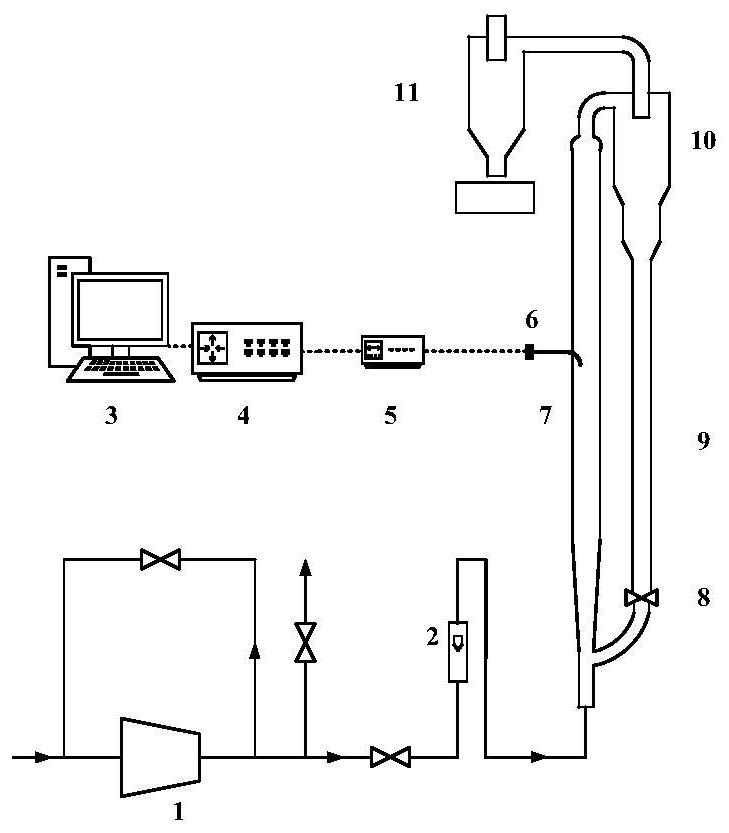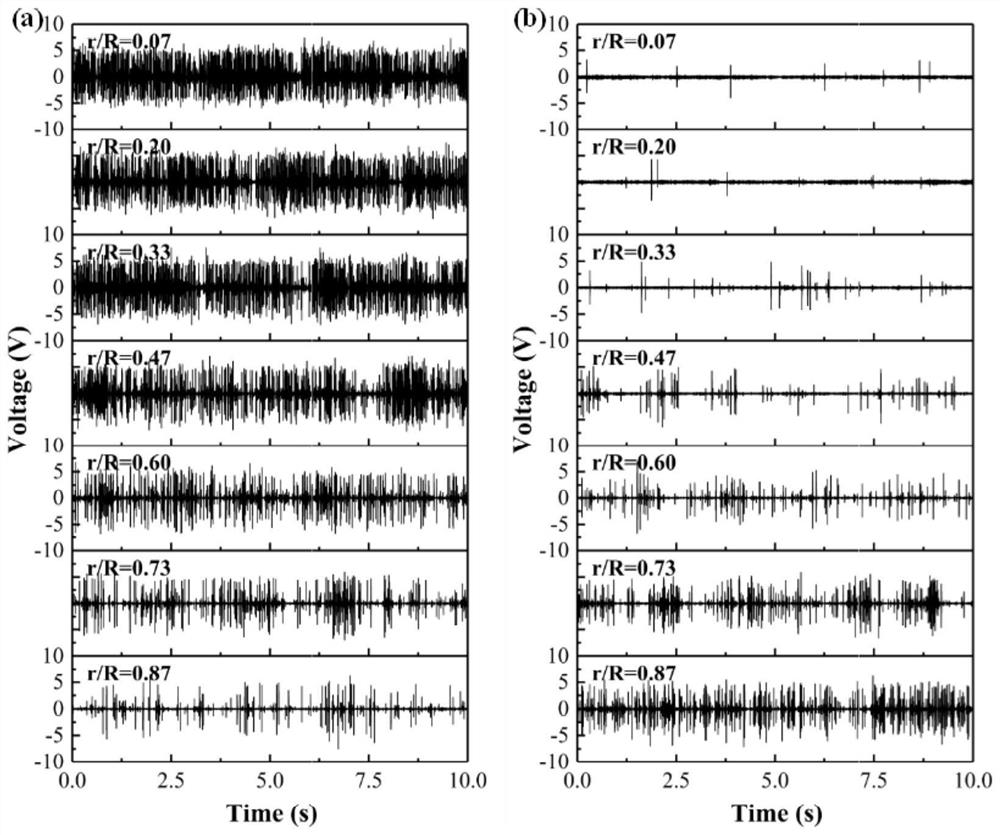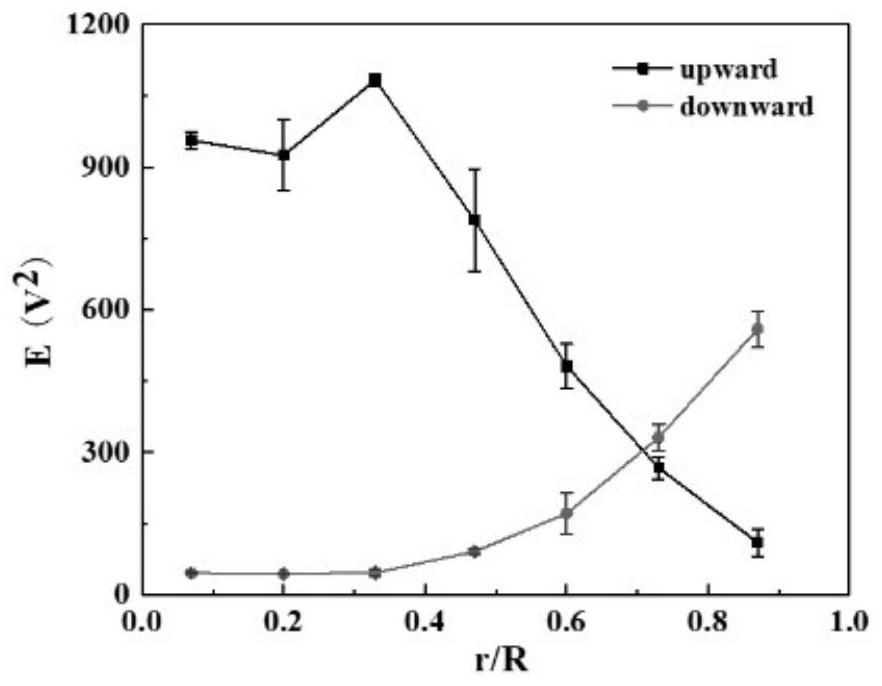Acoustic emission measurement method for particle parameters in gas-solid system
An internal particle and acoustic emission technology, which is applied in the direction of material analysis, measurement device, and particle suspension analysis using acoustic wave emission technology, can solve the problems of inability to realize local particle parameter detection, inability to obtain spatial distribution information, singleness, etc., and achieve anti- Strong interference ability, strong compatibility, and flexible coupling effect
- Summary
- Abstract
- Description
- Claims
- Application Information
AI Technical Summary
Problems solved by technology
Method used
Image
Examples
Embodiment 1
[0039]The shielded curved probe is used to measure the acoustic emission signals at different radial positions in the riser, and the acoustic emission signals in two different directions are collected at the same position. When the guiding wave surface is facing downwards, the acoustic wave signal generated by the action of upward moving particles and the guiding wave surface is collected; when the guiding wave is facing upward, the acoustic wave signal generated by the action of downward moving particles and the guiding wave surface is collected.figure 2 Shown are the time-domain diagrams of acoustic emission signals generated by particles moving up and down at different radial positions in the riser. The original signal shows that there are particles moving upward and downward at different radial positions in the riser. In order to further characterize the movement direction of the particle body, the energy of the acoustic emission signal at different radial positions is calculate...
Embodiment 2
[0041]Figure 4 Shown is a schematic diagram of a single particle experimental device. The air enters the buffer tank after being pressurized by the air compressor, and is controlled by the solenoid valve to generate a pulsed air flow. The polypropylene particles with the same particle size as the riser are selected and filled into the bore at the right end of the solenoid valve. During the experiment, the particles accelerated by the pulsed airflow collide with the wave surface of the probe to generate acoustic emission signals, and the collision speed is obtained by shooting with a high-speed camera. By adjusting the air pressure in the buffer tank, single-particle experiments can be performed under different particle velocity conditions. The acoustic emission signal energy or the acoustic emission signal peak value is extracted as the characteristic value, and the particle velocity model is established through the neural network algorithm. Extract the acoustic emission signal ener...
Embodiment 3
[0043]Using double-core shielded probes and fusion of acoustic emission sensor arrays, the time difference (delay time) of particles passing through adjacent probes is obtained through cross-correlation calculation, and the ratio of the distance between adjacent probes and the signal time difference is calculated to obtain local particles speed.
[0044]
[0045]Among them, v is the particle velocity; L is the effective distance between adjacent probes; τ is the delay time calculated from the cross-correlation of acoustic emission signals at adjacent positions.
PUM
 Login to View More
Login to View More Abstract
Description
Claims
Application Information
 Login to View More
Login to View More - R&D
- Intellectual Property
- Life Sciences
- Materials
- Tech Scout
- Unparalleled Data Quality
- Higher Quality Content
- 60% Fewer Hallucinations
Browse by: Latest US Patents, China's latest patents, Technical Efficacy Thesaurus, Application Domain, Technology Topic, Popular Technical Reports.
© 2025 PatSnap. All rights reserved.Legal|Privacy policy|Modern Slavery Act Transparency Statement|Sitemap|About US| Contact US: help@patsnap.com



